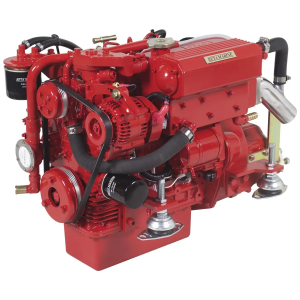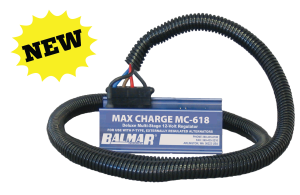Background
When we bought del Sol, the surveyor discovered that the engine had some blow-by, but it started and ran OK. He also pointed out that the original engine hours counter had been replaced somewhere along the way, but from notes in the log, I was able to determine that the engine had approximately 2000 hours. Then, while going through all of the systems a month later, a diesel mechanic told us our engine was “f%#ked”, and that it might last a couple of years, but needed attention.
4.5 years and 200 hours later, the blowby was getting worse. It was a good run, but we no longer had confidence in it, and decided it was time to deal with it.
Repower Options
Engine
We had a few options:
- Rebuild existing Universal M25XP
- Buy a used replacement M25XP
- New M25XPB
- Yanmar 3GM
- Beta Marine 25
- Beta Marine 30
Either rebuilding or installing a used replacement would still leave us with an old engine. Since we plan to keep this boat as long as we can both sail, we were willing to invest in our comfort and peace of mind. Therefore, we opted to go for a new engine instead.
We eliminated the Yanmar pretty early in the process. It would require significant rework of the engine mount, it was more expensive to get parts, and the fuel system can only be worked on by certified techs.
The B variant of the M25 series has a pretty bad reputation in the Catalina owners forums, so we eliminated that one as well.

That left us with the Beta25 and Beta30. The idea of a bit more power was very tempting, but due to size constraints, we finally decided to go with the Beta25. It is slightly smaller than the M25XP in all dimensions, and there is an option for an Atomic 4 mount. In the older Catalina 36s like ours, the engine mounts used the Atomic 4 spacing, so that meant much less work on the mounts. If we went with the Beta30, we would have to significantly rework the mounts and would still struggle with fit, since it is longer and taller than the Universal. In the newer Mark II Catalinas that used the M35, the Beta30 would probably be the right fit, but not for our Mark I.
Transmission
The Beta has options for the following transmissions:
- TMC40 (2:1 or 2.6:1)
- PRM60 (2:1 or 2.5:1)
The TMC40 is much more available in the US, and the Beta dealer said that we should use the higher ratio transmission with a higher-pitch prop. This would keep the engine in its power band better, and a slower prop is more efficient. So we chose the TMC40 with the 2.6:1 ratio.
Alternator
The Beta25 comes standard with a 40A alternator, but we wanted something more. When we rebuilt the electrical system on del Sol a couple of years ago, we installed a 105A alternator with an external regulator. Due to the weak belt system on the M25XP, we had to derate it to about 70A to keep the belt from slipping, but this was a good amount of power for us and worked well, so we opted to go with the 75A upgrade for the Beta25. The Beta25 has a much better belt system that can drive the 75A alternator easily.

We also wanted an external regulator, since we wanted it to play nice with the solar charger and our AGM batteries. We could have kept our existing M-614 regulator, but the new M-618 ties into the rest of our Balmar battery management system, and makes it much easier to program and monitor the alternator. This choice also makes it possible to sell the old alternator/regulator as a ready-to-go set.
Prop
With the new gearing recommended by Beta, we need to replace the prop. The traditional route would be the Michigan Wheel 15×10. When looking to buy this prop, the lead times were crazy long, and if we needed to re-pitch it would also take a long time.
While looking at alternatives, I came across the Campbell Sailer. It is a completely different design that seems to be more efficient, better balanced and has less drag. The lead times were 1-2 weeks, and they include free re-pitch with quick turnarounds. Everyone who installed one seemed to be impressed, so I decided to give it a try. After working with the team at West by North who makes the prop, they recommended a 15×8, since their prop design has much less slip than a traditional prop.
Shaft and Seal
The existing PSS dripless seal has not been serviced in 7+ years, so at a minimum, it would need new bellows, but it was looking pretty worn and was spewing graphite, so we decided to replace it. Also, we needed a new flange/coupler for the transmission, and those need to be fit/faced to the shaft. With all that in mind, we decided to have a new shaft made. We also replaced the cutlass bearing and zincs while everything was apart.
Execution
(Follow links below for details)
The boat was past due for new bottom paint, so we chose to get that done at the same time and take advantage of the yard time to do some of the engine work:
- Disconnect and pull old engine
- Shim, mount and align new engine
- Replace prop, shaft/coupler, cutlass bearing, dripless shaft seal
- Replace seawater through-hull with 1″ version
- Replace exhaust through-hull with 2″ version
Then we had the boat towed back to the slip where I did the rest of the work:
- Electrical: rewire battery, alternator, regulator
- Fuel: new hoses, pump, filter/separator
- Cooling: New raw water strainer, hoses, vented loop, flow sensor
- Exhaust: new custom riser, water-lock muffler, hose, temp alarm
- Water heater: replace the water heater and run new lines from the engine
- Controls: rework engine controls
- Control panel: custom panel face with additional gauges and alarms
- NMEA-2K interface: send engine data to the helm display
Cost Summary
This is a rough breakdown of costs in late 2023 through early 2024. We chose to replace/upgrade every system that touched the engine, so the cost is higher than if you chose to do the bare minimum. That said, I did almost all of the work myself, so there is only a small amount of labor included here, mostly for dealing with the thru-hulls and the shaft. If you paid someone to do all this for you, the cost would be significantly higher.
| Item | Cost | Notes |
|---|---|---|
| Engine/Trans | $14,000 | Includes “C” panel and extended harness |
| Alternator/Reg | $1,000 | 75A, External reg |
| Fuel system | $500 | Pump, separator, hoses, fittings |
| Raw water system | $300 | Separator, fittings, flow alarm, hoses, anti-siphon. Increase to required 3/4″ |
| Exhaust | $2500 | Muffler, hose, riser. Increase to the required 2″ (50mm) |
| Controls | $300 | Custom bracket for shifter |
| Custom control panel | $300 | Beta panels do not fit C36 |
| Prop | $1000 | New prop required due to transmission ratio change. |
| Shaft, seal, bearing, zincs | $1800 | Old dripless seal was badly worn. New shaft allowed for repositioning the engine forward a bit for fit. |
| Crane lift | $700 | Lifting old engine out and new one in. This could be done using boom to save this cost. |
| Yard time | $650 | Haul out and some yard time was included in the cost of the bottom paint job, so this would be much more if not done with bottom paint. |
| Bottom paint | $2500 | Included haul out and several days of yard time. |
| Misc yard labor | $2500 | Enlarged thru-hulls, engine alignment, other misc. help |
| Engine mounts | $1200 | I could have done most of this myself and saved a lot, but I didn’t know that at the time. |
| Water heater | $700 | Includes new heater, hoses, and clamps. Not really necessary, but easier to do it now while hoses were drained and removed. |
| NMEA 2K | $800 | Publish engine gauges to NMEA 2K bus |
| Total | $30,750 | Does not include any of my labor, which was substantial. |
Part for sale
Many of the parts I removed from the old engine were nearly new, since I had recently replaced them. I have saved them to hopefully help other C36 owners that may need them. Check out the list of parts.
Conclusions
This was a huge job and cost more than I had planned, but in the end I am glad I decided to replace everything rather than wait for some old parts to let me down later. I learned a lot through this process, and now have a boat that will hopefully last us well into our future.





